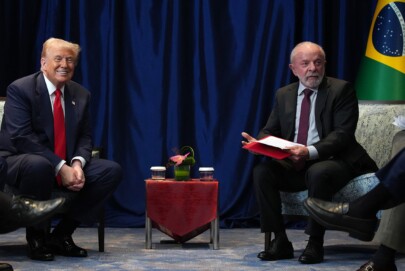Projeto da Finlândia ensina Inteligência Artificial para todo mundo
Leia reportagem da Fast Company em que é contada a história inédita da Finlânidia, com seu projeto de ensinar Inteligência Artificial abertamente a população. Não posso imaginar nada melhor para mitigar os medos de que só engenheiros sem comprometimento social planejem projetos de AI.
Finland’s grand experiment to teach AI to anyone. In the era of AI superpowers, Finland is no match for the US and China. So the Scandinavian country is taking a different tack. It has embarked on an ambitious challenge to teach the basics of AI to 1% of its population, or 55,000 people. Once it reaches that goal, it plans to go further, increasing the share of the population with AI knowhow. The scheme is all part of a greater effort to establish Finland as a leader in applying and using the technology.
Citizens take an online course that is specifically designed for non-technology experts with no programming experience. The government is now rolling it out nationally. As of mid-December, more than 10,500 individuals, including at least 4,000 outside of Finland’s borders, had graduated from the course. More than 250 companies have also pledged to train part or all of their workforce.
At the heart of the economic push to up-skill Finnish workers is another push to create a more informed democracy. That was what prompted Teemu Roos, the mastermind behind the course and an associate professor of computer science at the University of Helsinki, to begin the project in the first place. He wanted to equip voters with the necessary information to weigh in on how the country should invest and regulate AI.
It’s a noble strategy for tackling a problem that countries are facing around the world: the lack of a strong public comprehension of a technology whose development needs to be governed carefully.
In the US in particular, a study published last week from the Center for the Governance of AI at Oxford University found that many Americans don’t realize the nature or prevalence of AI—that it’s behind Facebook’s photo-tagging capabilities and Netflix’s recommendation engine. Policymakers are equally confused about the technology’s scope and capabilities, as they demonstrated when Mark Zuckerberg testified in front of Congress in April of last year. Without a grounded understanding of AI, the US risks either unintentionally curbing innovation or failing to mitigate its consequences.
So in the process of asserting its participation in the global AI economy, Finland is advancing its leadership in another way: by showing other countries how to make the AI revolution more inclusive. Now it’s up to the rest of the world to follow.
Nvidia’s quest to make robots smarter with Ikea. For all the recent progress in artificial intelligence, industrial robots remain amazingly dumb and dangerous. They can perform arduous tasks precisely and repetitively but cannot respond to variations in their environment or tackle something new. Nvidia is now vying to change that with its new robotics lab in Seattle. Its secret weapon? An ordinary Ikea kitchen.
Learning to do kitchen tasks would equip robots with the skill required to do more challenging factory work, or to help in hospitals, says Dieter Fox, the creator of the lab and a professor at the University of Washington. One system inside the lab—a single robot arm sitting atop a wheeled platform—already spends its days fetching jars and bottles and boxes and putting them into drawers.
This is just the beginning, says Fox. The kitchen tasks will get progressively harder, from finding and moving familiar objects to working with unfamiliar ones. Eventually, if all goes well, a robot will be able to work alongside a human doing something as complex as preparing a meal. “I see this as the ideal domain to represent any challenge,” he says. The Ikea set up also allows other robotics labs to easily replicate and compare their work with the Nvidia team’s.
The past few years have offered encouraging signs that advances in machine learning might help industrial robots become more useful. Reinforcement learning, in particular, has emerged as an exciting way for robots to tackle difficult challenges. It involves controlling a robot with a deep neural network, and rewarding any behavior that brings the system closer to a given goal.
The problem with most such projects is that they only work in relatively narrow situations. Change the environment slightly, and the system has to relearn everything from scratch. Fox says the key to more generalizable robot learning may involve equipping robots with an foundational understanding of the physical world, including elements like gravity. This idea—which they are experimenting with—might be somewhat akin to the intuitive understanding of physics that babies exhibit. Read more here.













